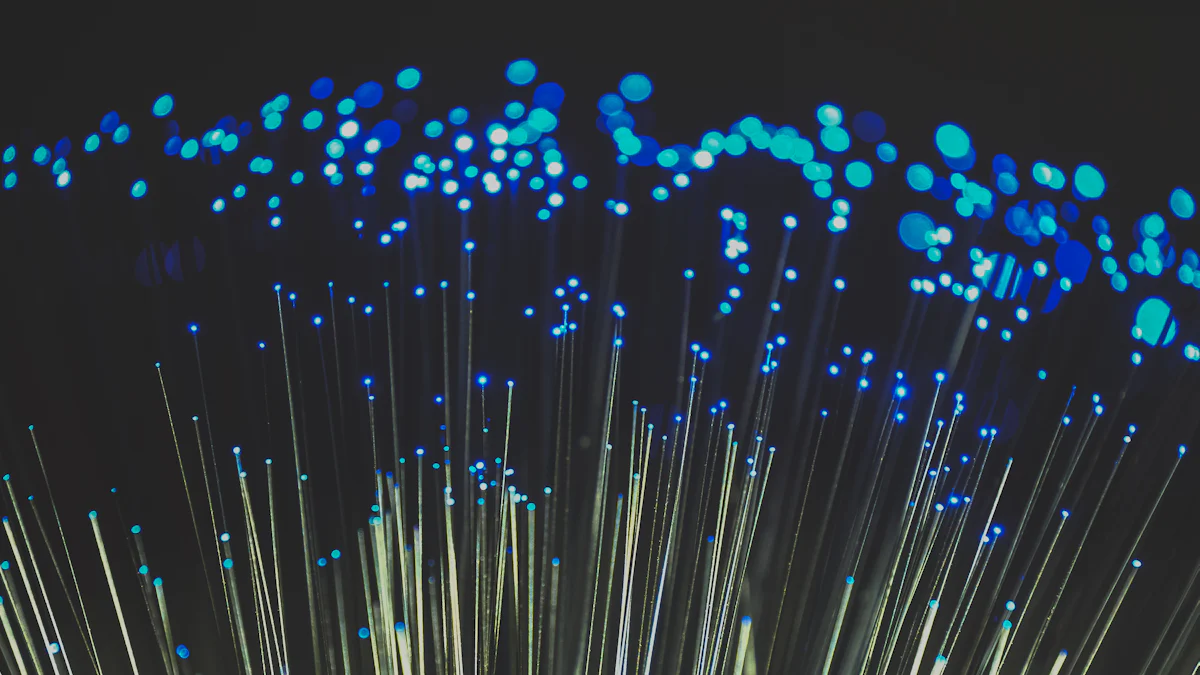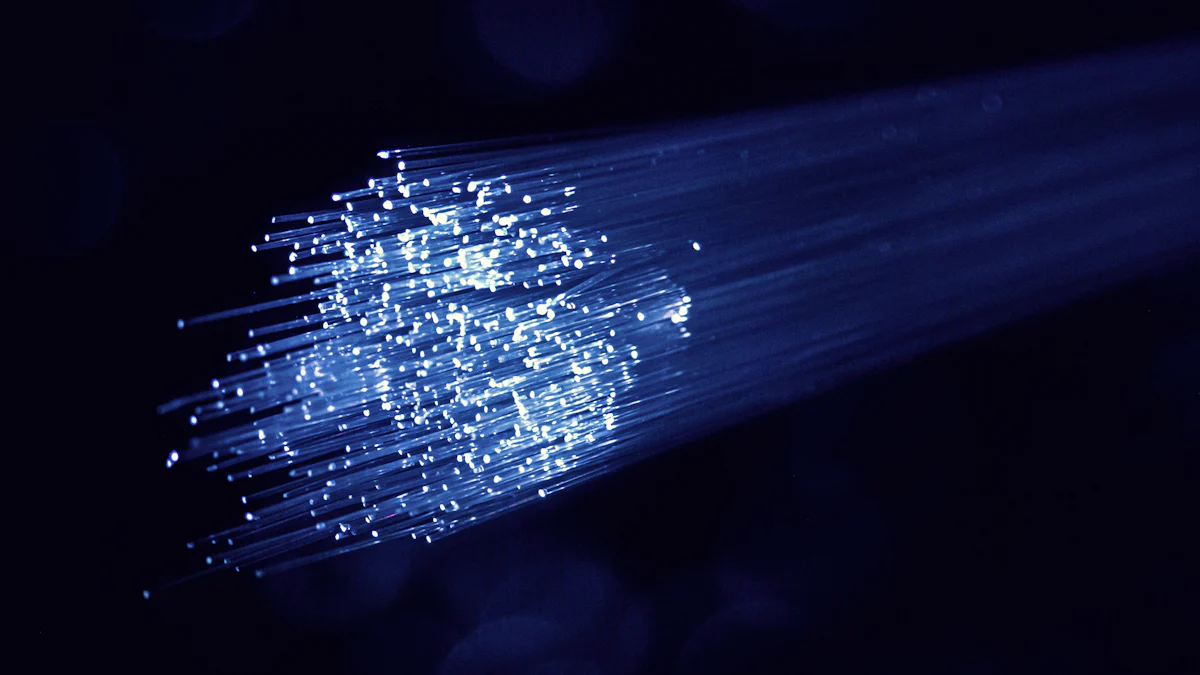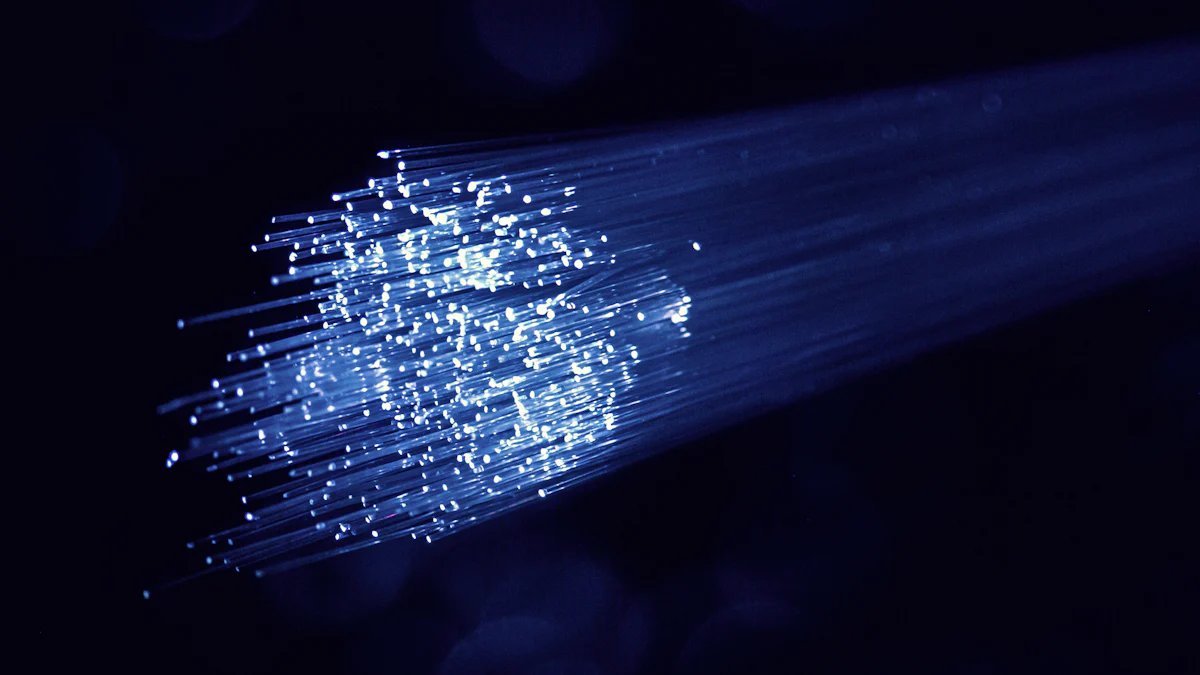Unveiling the Power: Fiber Optic Tech for High Bandwidth Transmission

Technological advancements and market demand are propelling the evolution of fiber optic technology towards enhanced connectivity solutions. The soaring need for robust optical fiber networks underscores the critical role of high bandwidth transmission in modern communication. The key benefits of fiber optic technology include low attenuation, electromagnetic interference resistance, and seamless long-distance transmission capabilities.
High Bandwidth and Low Attenuation

High Bandwidth is a crucial aspect of fiber optic technology, defining its ability to transmit vast amounts of data swiftly and efficiently. The significance lies in enabling seamless communication processes across various platforms. In modern communication, the definition of high bandwidth pertains to the capacity for rapid data transfer, ensuring real-time interactions and smooth operations. Its importance cannot be overstated as it forms the backbone of contemporary digital connectivity.
Applications in Modern Communication showcase the versatility of high bandwidth in meeting diverse technological needs. From streaming services to cloud computing, high bandwidth facilitates uninterrupted data flow, enhancing user experiences. The integration of fiber optic technology in these applications ensures reliable and high-speed connections, supporting a wide range of online activities.
When discussing Low Attenuation, we delve into its role in maintaining signal integrity over extended distances. This benefit guarantees that data travels without significant loss or distortion, preserving information accuracy. In comparison with other technologies, the advantage of low attenuation in fiber optics becomes evident through its ability to sustain data quality over long transmission spans.
Electromagnetic Interference Resistance
In the realm of data transmission, fiber optic technology stands out for its remarkable electromagnetic interference resistance capabilities. Understanding the detrimental effects of external factors is crucial in maintaining seamless communication channels.
Causes and Effects
Various sources can trigger electromagnetic interference, disrupting signal integrity and impeding data flow. Electrical devices, radio frequencies, and power lines are common culprits that introduce unwanted disturbances. The repercussions of such interference manifest as signal distortions, leading to data corruption and communication breakdowns.
Impact on Data Transmission
The impact of electromagnetic interference on data transmission cannot be underestimated. In high-interference environments, traditional communication mediums often falter, resulting in compromised data security and reliability. The susceptibility to external disruptions underscores the necessity for robust solutions that guarantee uninterrupted connectivity.
Fiber Optic Immunity to Interference
Fiber optic technology boasts inherent mechanisms that shield it from electromagnetic disturbances, ensuring consistent performance even in challenging settings.
Mechanisms of Resistance
The design of fiber optic cables inherently mitigates electromagnetic interference through insulation and signal containment. By confining signals within the fiber core, external disruptions are minimized, preserving data integrity over long distances.
Advantages in High-Interference Environments
In environments prone to significant electrical disturbances, fiber optic technology shines as a beacon of reliability. Its immunity to external interferences guarantees secure data transmission without compromising speed or quality. The ability to operate seamlessly amidst electromagnetic challenges positions fiber optics as the preferred choice for mission-critical applications.
Long-Distance Transmission

The capabilities of fiber optic technology extend beyond local connectivity, offering unparalleled advantages in long-distance data transmission scenarios. The inherent features of fiber optics ensure data integrity and reliability over extensive geographical spans, making it a preferred choice for global communication networks.
Distance and Data Integrity
When considering the distance covered by data transmissions, fiber optic technology excels in maintaining signal strength and quality over extended routes. Unlike traditional mediums that suffer from signal degradation, fiber optics uphold data integrity regardless of the distance traveled. This capability is essential for ensuring seamless communication channels between distant locations.
In real-world applications, the significance of fiber optic technology in long-distance transmission becomes evident. From undersea cables connecting continents to intercontinental data centers, fiber optics play a pivotal role in enabling global connectivity. The ability to transmit vast amounts of data across borders without compromising speed or security underscores the unparalleled advantages of fiber optics in modern communication infrastructure.
Future Developments
As technological advancements continue to shape the landscape of fiber optic technology, innovations are poised to revolutionize long-distance data transmission further. These advancements aim to enhance existing capabilities and address emerging challenges in global communication networks.
Innovations in Fiber Optics
The ongoing research and development efforts in the field of fiber optics are driving industry evolution towards enhanced performance and efficiency. Innovations such as enhanced data compression techniques and advanced signal processing algorithms are set to redefine the boundaries of long-distance transmission capabilities. These innovations underscore the commitment towards pushing the boundaries of what is achievable with fiber optic technology.
Potential Impact on Global Communication
The potential impact of these innovations on global communication networks is profound, promising enhanced connectivity and reliability on a global scale. By overcoming existing limitations and expanding the reach of high-speed data transmission, future developments in fiber optics are poised to reshape how information is exchanged across continents. The seamless integration of these advancements into existing infrastructure holds the key to unlocking new possibilities for international collaboration and digital connectivity.
Fiber optic developments contribute to the expansion and sustainability of the global economy by enabling rapid data transfer and reliable communication infrastructure.
Projected future trends suggest a continued emphasis on enhancing data transmission speeds and reliability through innovative fiber optic technologies.
Technological advancements and market demand are driving the evolution of fiber optic technology, leading to enhanced connectivity solutions.
Advancements in the fiber optic industry are reshaping the way businesses and consumers access and utilize data, playing a pivotal role in various industries.
Market forces and demand dynamics are driving technological progress in the fiber optic industry, fueled by the need for high-speed data transmission.
See Also
Advantages of Optical Cable in FTTR for Visible Room Fiber Setup
Expertise in Fiber Optic Communication: Nylon Cable for FTTR
Current Trends in 24 Cores Fiber Optic Patch Cable Usage in Telecom
Improving Indoor Connectivity with FTTR Concealed Fiber Cables
OM4 Fiber 250um LSZH Indoor Fiber Optic Cable: Vital for Data Centers


